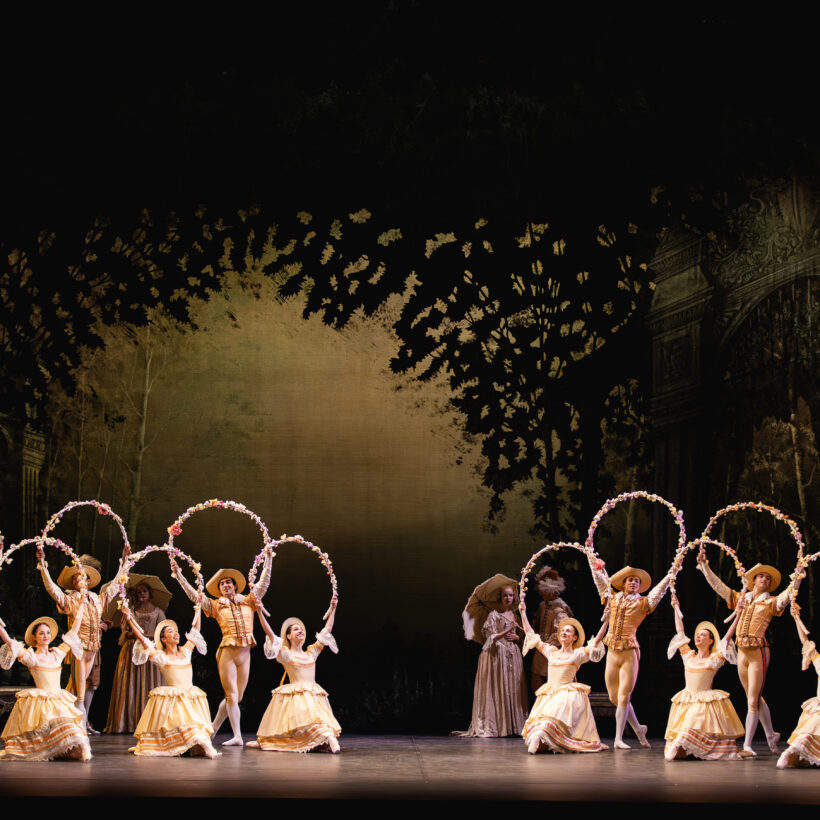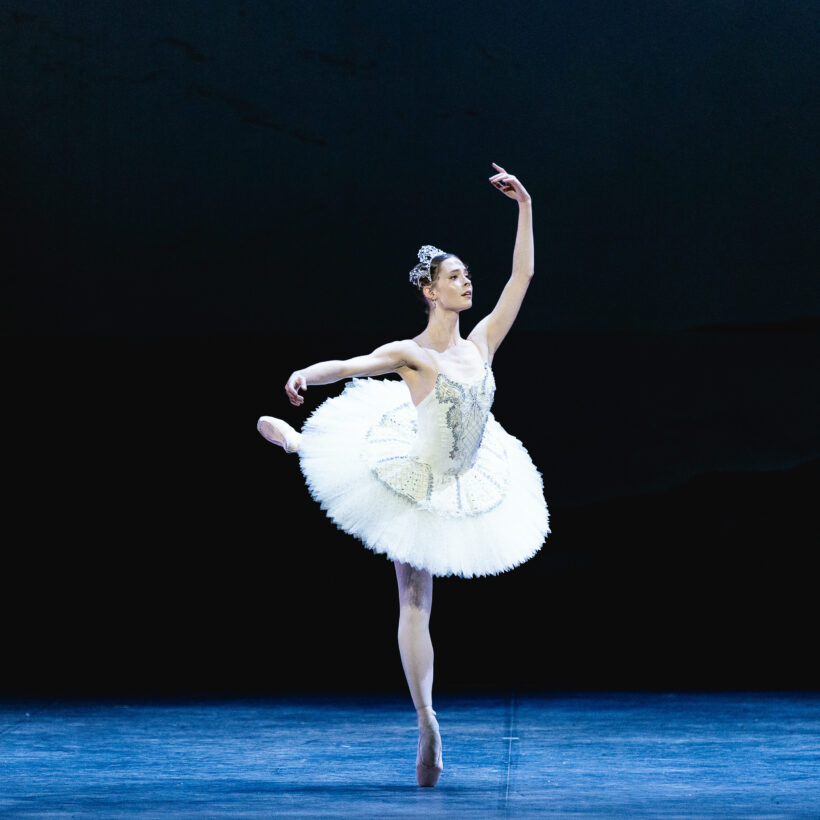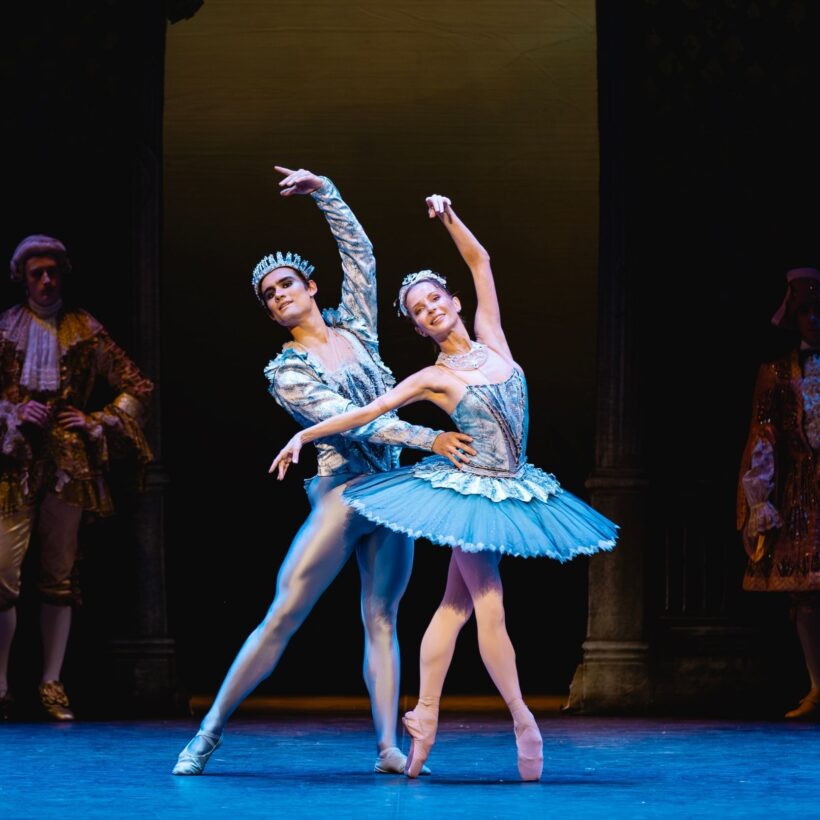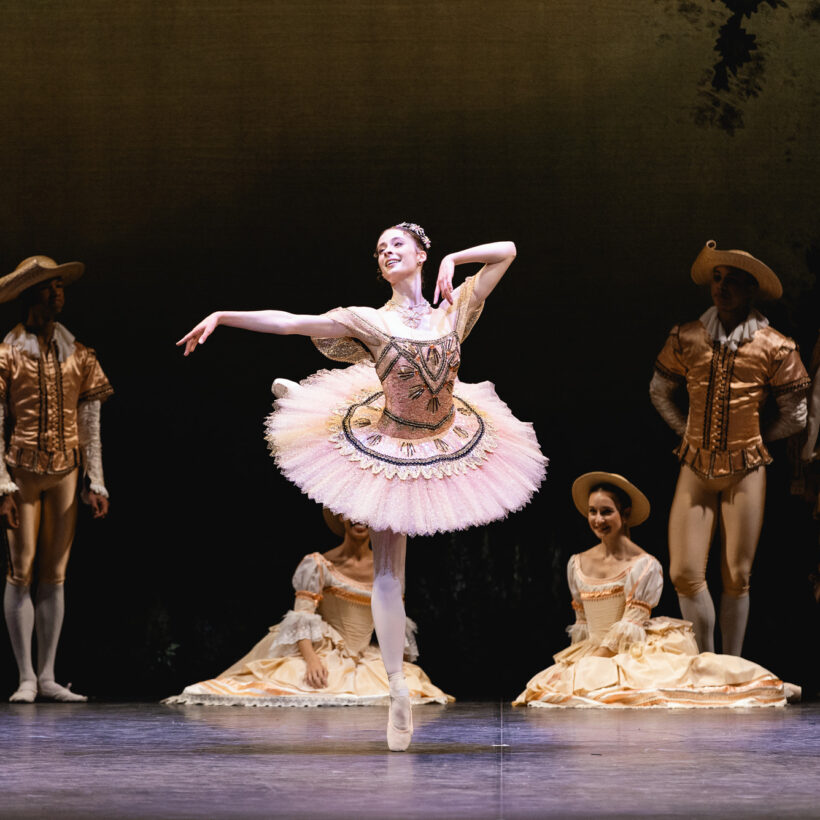The art of classicism: inside the choreography of The Sleeping Beauty
This season, English National Ballet stages Sir Kenneth MacMillan’s production of the fairytale ballet. Closely influenced by Petipa’s original, it’s a piece that tests dancers at every level, requiring accuracy, artistry and control in every performance.
We speak to the Artistic team working on the production and explore why The Sleeping Beauty remains such a defining work.
Clean lines and classical truth
Guest Repetiteur Antony Dowson describes The Sleeping Beauty as “probably above all other classical ballets the most simple and clean.” Its beauty lies not in excess, but in refinement. The arm movements in particular, he explains, are composed of “slightly smaller shapes and so therefore are more in line with what a dancer might do in a daily ballet class.”
That clarity of line and structure – something dancers continually work to perfect – make the ballet deceptively transparent. The choreography must be executed with precision, but without strain. Dowson notes that with today’s technically advanced dancers, “the most challenging thing is actually to do less, particularly in the arms and upper body.” The goal is precision, not extension for its own sake.
Associate Artistic Director Loipa Araújo echoes this idea, explaining that The Sleeping Beauty strips movement back to its classical essence.
An arabesque is an arabesque. You cannot hide it or try to go into arabesque thinking of a passion or something. It’s just a simple arabesque. Two pirouettes are two pirouettes. A balance is a balance.
She stresses that even through dancers today have extraordinary physical range – higher legs, deeper lines, more extreme shapes – that must pull back, to respect the ballet’s style. “We still have to honour, to keep, the classicism. We go back to the classical way, but still try to keep it fresh and alive.” It is this balance – tradition fused with present-day technique – that defines English National Ballet’s approach.
Music and movement: the perfect match
Much of the ballet’s enduring strength lies in the synergy between the choreography and Tchaikovsky’s score. Guest Repetiteur Alfreda Thorogood explains that the score was tailor-made to Petipa’s structural needs: “Petipa had gone to Tchaikovsky and said ‘I want this many variations, this many pas-de-deux, I want the ballet to build in such a way in each act’ and so it was a true collaboration.”
The result is a sense of architectural unity, and of an overall “neatness, precision, and lush grandeur.” The choreography is challenging, she notes, but deeply rewarding. Thorogood calls dancing the role of Aurora “an achievement, an aspiration.” The Rose Adagio, in particular, charts the character’s development in real time: as Aurora balances, promenades and engages with each suitor, “slowly as this set piece evolves, you see this young 16-year-old evolve and become a woman and it brings the house down.”
For Dowson, one section distils Petipa’s genius more than any other: “the Grand pas de deux in Act III is probably the most musical choreography that Petipa ever created.” In its clarity and coherence, it reflects the full maturity of both Aurora and her prince. Clean lines, precise épaulement (the placement and movement of the shoulders and head in relation to the body), and unbroken musical phrasing mark the culmination of the ballet’s classical journey.
View this post on Instagram
Aurora: a role of immense challenge and reward
For Repetiteur and former Lead Principal Erina Takahashi, and Associate Guest Repetiteur Cynthia Harvey, Aurora is a role that leaves a lasting imprint.
Takahashi’s first Aurora was at the Royal Albert Hall – an unforgettable debut that introduced her to one of ballet’s most demanding roles. She describes The Sleeping Beauty as “such a pure classical ballet.” Throughout her career she has returned to it, both dancing and coaching, carrying with her the voices of those she learnt from. When she now guides younger dancers, she tries to pass on not just corrections but emotional memories too: the excitement of youth, the sense of wonder, the feeling of stepping into a momentous day.
Aurora, she says, isn’t only steps, it’s storytelling. She encourages the dancers to draw on their own experiences to create an authentic portrayal. Musical responsiveness is essential too. “I find this choreography very, very musical,” she says, noting that dancers must “use the music… so it’s more than just counting one, two, three, four.”
Harvey, too, emphasises the character’s emotional arc. One of the ballet’s most remarkable aspects, she says, is “the transition of character. Young girl to maturity, 100 years later. You can’t just do the steps. That’s meaningless.” She recalls how at a gala event, performing the Rose Adagio in isolation felt unnatural: “without the story behind it, it’s really difficult.”
Harvey speaks about the physical and emotional demands of Aurora, especially in Act I: “it’s go, go for her,” with almost no rest between entrance, Rose Adagio, solo, and finale. Managing exuberance while staying calm enough to deliver the balances is, she says, one of the ballet’s greatest tests. Yet it is also where the musicality shines. Often dancers today can focus on holding the balance in the Rose Adagio for as long as possible, but Harvey stresses that “it’s about quality… it is in the music.” She describes the correct musical structure of the balances: releasing the suitor’s hand on count one, then two, three and four in successive promenades, aligning each release with a specific musical cue.
Moving into the wedding later in the ballet, alongside the technical demands of the choreography, the role requires depth of character. Aurora carries herself with regal confidence, and even small gestures can convey meaning. A teacher once told her to imagine she was “showing off the lace of your wedding dress,” when presenting her leg in part of Aurora’s solo – a tip she now passes on to our dancers.
Celebrating classicism
For all of our coaches, a shared theme emerges: The Sleeping Beauty demands artistry through restraint. The challenge for the team working with our dancers to prepare the ballet, is to help them find expressive nuance without theatrical excess.
Dowson describes his coaching style as encouraging yet clear: the aim is for the dancers to “not show too much strain or physical output whilst trying to look efficient.” Mime is essential, too: “you have to understand what you’re saying whilst learning it, otherwise it won’t make sense for an audience.”
Araújo takes a similar approach, focusing rehearsals on “how to make that same arabesque that you work on in class, something of beauty.” She believes a dancer’s artistry comes from executing the movement without showing the preparation for the step – making it look effortless. She also notes the stylistic distinctions between ballets: “You cannot do The Sleeping Beauty like you do Giselle or like you would do Swan Lake. They’re completely different ballets, different styles.”
The team agree: the work lies in refining, not embellishing. Araújo notes that in other versions of The Sleeping Beauty, arm lines have become more open and extreme. For Sir Kenneth MacMillan’s production, Alfreda Thorogood guides dancers towards “the classicism of the piece,” ensuring they remain harmonious with the ballet’s period and in line with the English style.

A benchmark of technique
I think The Sleeping Beauty remains a benchmark for classical technique because it is so pure. You could do it in a leotard and people would understand that it was The Sleeping Beauty.
Cynthia Harvey, Associate Guest Repetiteur
It contains everything a dancer trains for: balance, clarity, control, musical phrasing, classical épaulement. The steps themselves – pirouettes, arabesques, développés – are the daily bread of ballet class. But on stage, they become a test of mastery.
Araújo adds: “technique has no value if it has no artistry,” or in other words, it’s not what you do, but how you do it. The clarity of the choreography showcases the artistry more starkly than in other ballets. Every detail matters.
A ballet that shapes careers
For each member of the Artistic team we spoke to, The Sleeping Beauty is deeply personal.
Dowson danced almost every role in the ballet throughout his career, making it the work he performed more than any other. It is, he says, “a measure of a company’s classical grounding”.
Thorogood remembers it as her first major classical role, which she danced at 21- a formative challenge for any young ballerina.
Takahashi recalls beginning in the corps de ballet (the dancers who perform together as a group), watching principals dance Aurora and Bluebird, dreaming of the day she might take on the role herself. Now, as a Repetiteur, she experiences the thrill of watching dancers grow into the role, joking that she feels like she’s “almost becoming their mother.”
Harvey remembers the camaraderie with her partners, even the suitors in Rose Adagio who supported her. “I think everybody knows how difficult that ballet is,” she says, “and so they lift you up by being there for you.”
Araújo recalls a particularly special performance in 1974 when, dancing Aurora, she entered a state of total flow: “it was one of those nights that you will remember all your life… everything became so easy and so enjoyable.”
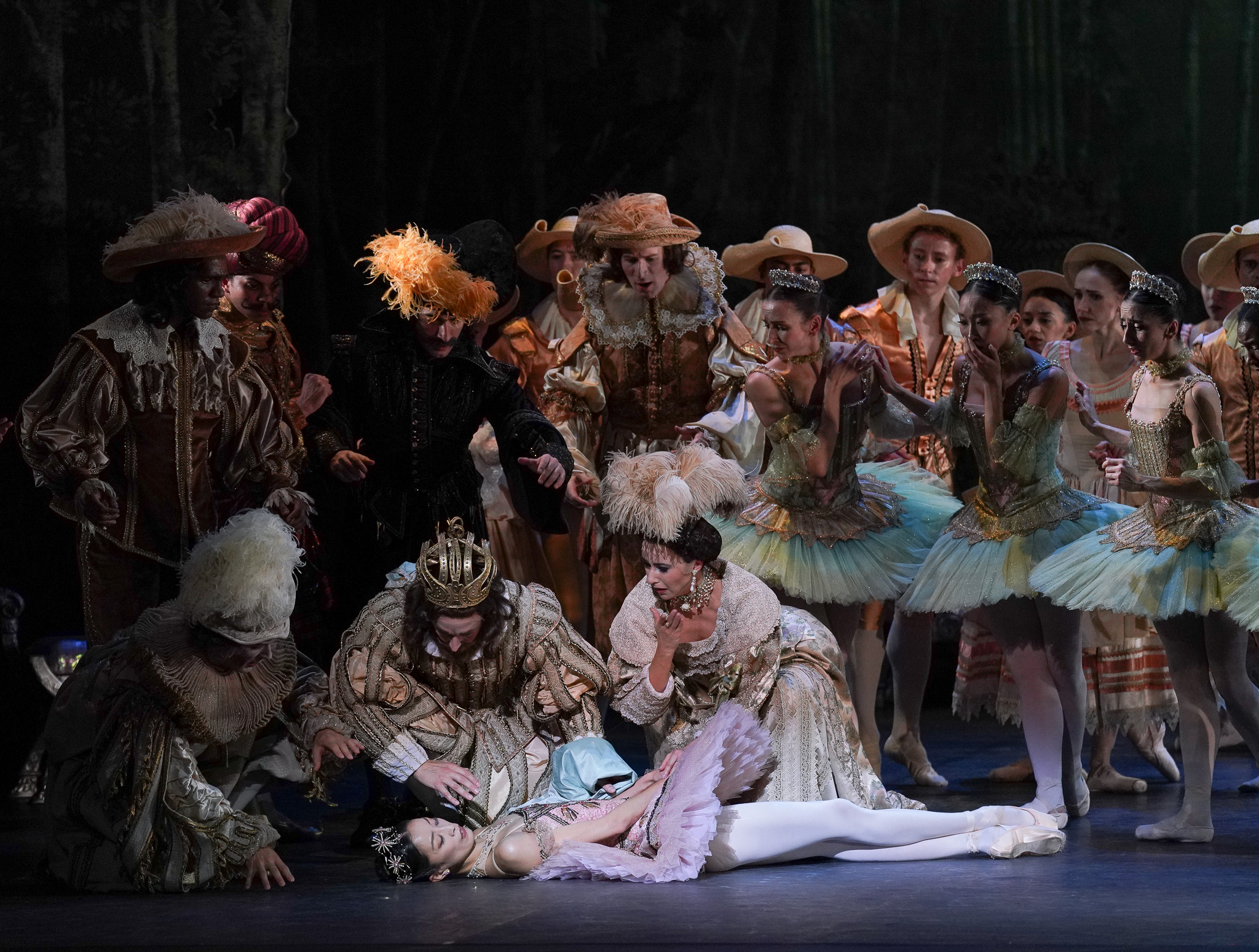
Keeping the legacy alive
For the English National Ballet’s Artistic team, staging The Sleeping Beauty is about cherishing the tradition and keeping it brilliantly alive.
The ballet continues to challenge each new generation of dancer and thrill audiences of all ages. Its continued importance in our repertoire relies on the dedication of those who pass it on – dancers, teachers and repetiteurs united in their commitment to its enduring magic.
See the artistry and emotion come alive – catch the production on tour this season.


